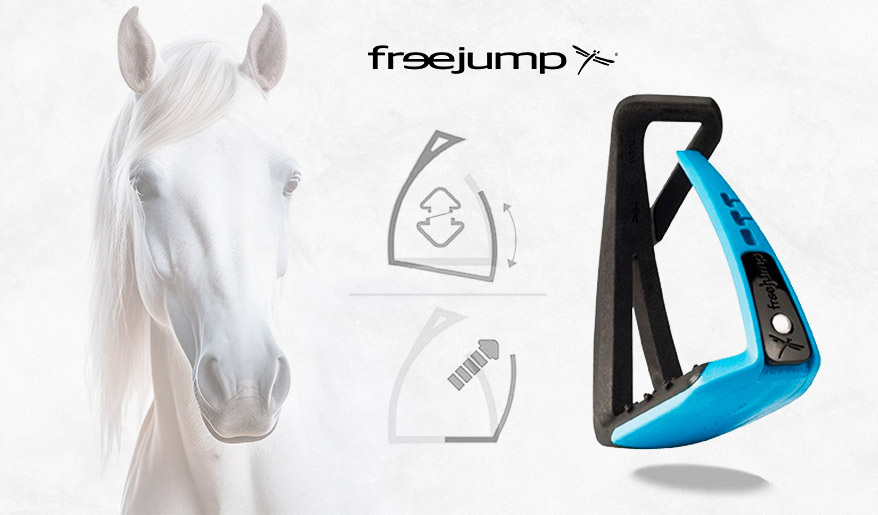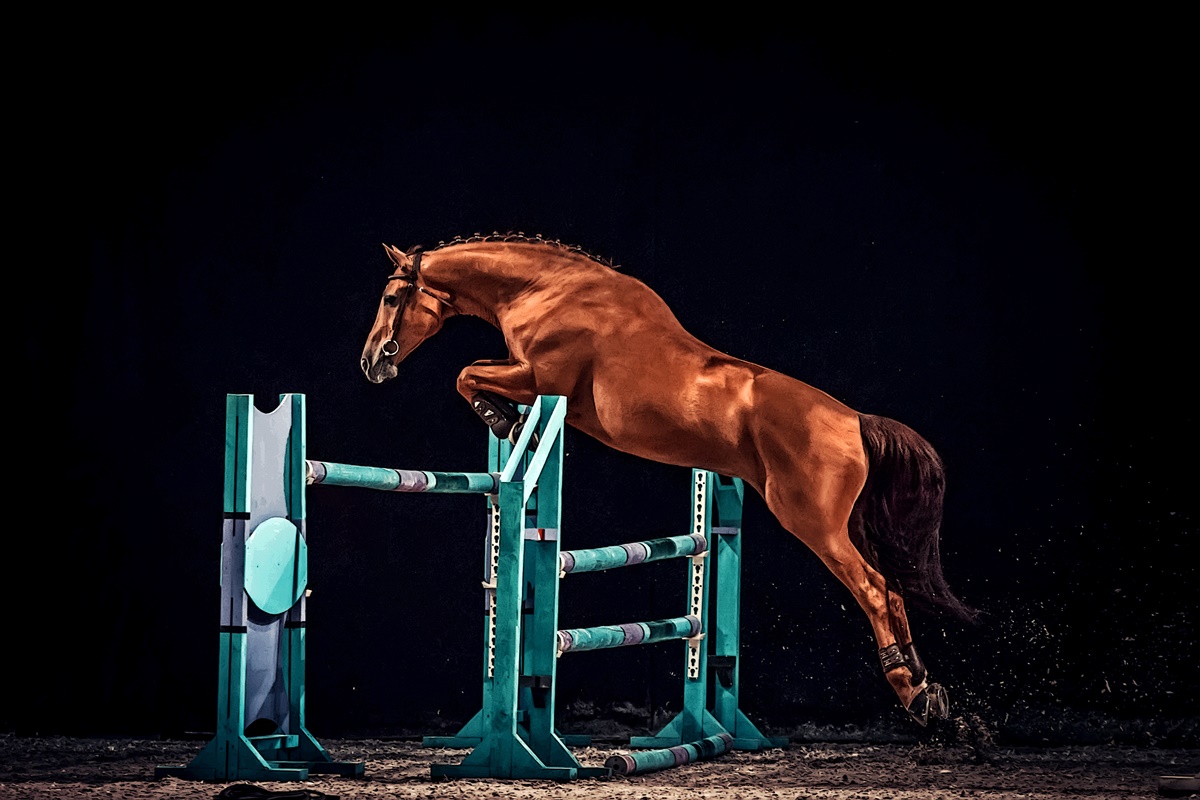
Show jumping is an equestrian discipline that consists of different types of competitions, during which riders according to the starting list jump the course. The first official competitions were organized in 1864 in Dublin. The stands full of people showed how popular the sport was. This allowed show jumping to become an Olympic Games discipline soon in 1900.
Types of competitions and their rules
Show jumping competitions have different levels and depending on the type of competition there are different scoring rules and classifications. The most common types of competitions are those that give penalty points for knocked-down rails. Championships, backyard, or regional competitions can be organized with different fence heights and with different competition rules.
Competition classes in Poland:
LL – competitions with fences up to 90cm in height
L/L1 – competitions with 100/105 cm fence heights
P/P1 – competitions with 110/115 cm fence heights
N/N1 – competitions with 120/125 cm fence heights
C/C1 – competitions with 130/135 cm fence heights
CC/CC1 – competitions with 140/145 cm fence heights
CS/CS1 – competitions with 150/155 cm fence heights
Types of show jumping competitions:
Classic competition – the simplest show jumping competition type. If multiple competition classes take place in one day, then basic competitions are the most frequently organized. Basic competition has simple rules that can be understood easily understood even by a layman. A pair (horse and rider) that completes the course with the least amount of penalty points and the fastest time wins. Every knocked-down rail costs the rider 4 penalty points; the same number of penalty points is given for refusals (horse stopping before a jump; horse disobedience), additional circle, or exceeding the time limit (1 penalty point for every started 4 seconds that exceeds the time limit).
Clear Round Classes – this type of competition is most commonly organized for amateur riders. The rules for this class consist of getting a clear round within the set time limit. The final rating and place on the podium are determined by the number of penalty points; riders, who obtain the same amount of penalty points can place ex-aequo. If the competition requires only one winner, then there is a jump-off with the same rules as the basic competition.
Puissance – a very spectacular type of competition, during which riders need to jump clear over a wall, which's height increases after each round. The beginning height of the wall is 140 cm; however, it can increase to over two meters!
Two-phase competition – this type requires a rider to jump two competition phases, one after another, however, the second phase is reserved only for riders that had a clear round during the first phase (after the first round, only riders without any penalty points continue in the competition). The course during the first phase usually consists of 7 to 9 fences, while in phase two – 4 to 6 fences. The finish line of phase one is at the same time as the starting line of phase two. Each phase can have different rules; usually, the first phase has basic rules, while the second phase is a speed class.
Six-bar – also called a six-fence competition. This type consists of six fences situated one after another in a two-foul distance (around 11 meters). The rules are the same as in the puissance competition.
Accumulator with a joker fence – this course includes from 8 to 10 fences, each fence grants the rider points (1 point for fence number 1, 2 points for fence number 2, etc.). The increasing difficulty of the fences allows the rider to collect more points. Regarding the last fence, the rider has two options: a standard fence (normally scored fence according to its order number) or a double-scored joker. In this competition, there are no penalty points, knocking down a rail causes the final score to be decreased by the points of a particular fence. Knocking down the joker causes all points to be erased. If two riders have the same number of points, then the winner is decided upon the time.
Speed class – rider needs to jump over the fences in a set order and in the shortest amount of time. There are no penalty points for knocking down a rail but instead, it adds extra seconds to the final time. Refusal doesn’t give the rider penalty points (however, jumping the same fence again is time costly), but falling causes the rider to be disqualified.
Top score – fences are set in such a way that allows the rider to jump them from both sides. Each fence has a plate with a number of points given to the rider, who jumps clear over it (the points are given only for a faultless jump). The rider can jump the fences in any given order. Knocked-down rails are not put back during the round and the rider can’t jump it again. If the rider knocks down the joker, then the final score is reduced by 200 points.
Classic competition with a jump-off – this competition consists of two parts, however, in comparison to the two-phase competition, the phases don’t start in the same round. Usually, around 25% of riders with the best scores (not always with a clear round) qualify for the jump-off. Because of its difficult format, and the fact that it requires a lot of focus from the horde-rider pair as well as their long preparation, this type of competition is most commonly organized during the biggest equestrian events.
Style competition – equitation competitions (that score the rider’s style) are most commonly organized for children and amateurs because it requires precision from the rider. Style competitions are also required for riders in L class; riders who clear the course with a positive mark can participate in higher classes – this is the so-called license round. Every mistake (for example rider loses balance, or trotting on the wrong diagonal) is penalized by the style judge. Style competitions for the horses are organized during young horse events, for example, during the eliminations and finals of the Polish Championships for Young Horses (MPMK). Every mistake costs the pair 0.5 points, while the special board gives points for the overall impression of the horse and its sports predispositions.
Ideal time competition – this competition requires the rider to have a clear round and a time close to the time limit set by the course designer. This competition favors a calm and fluid ride; the rider whose final time is the closest to the limit time wins.
Types of fences
Raised poles
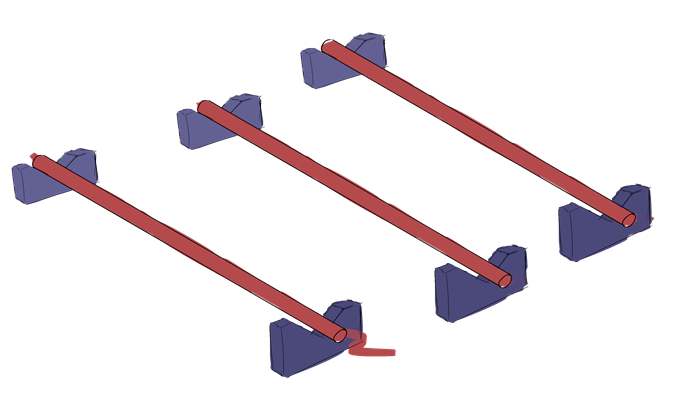
Cross rails
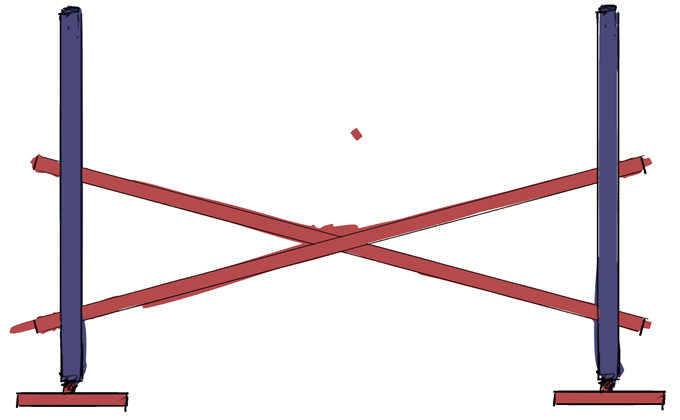
Vertical
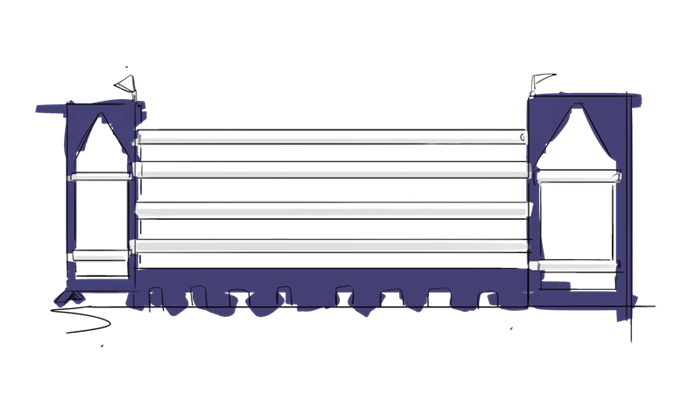
Oxer
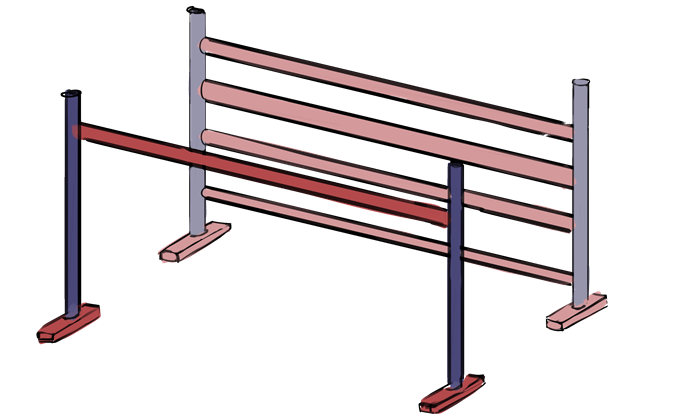
Gate
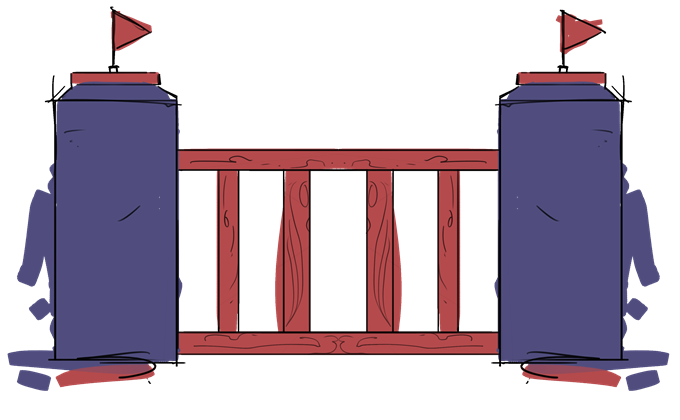
Double bar
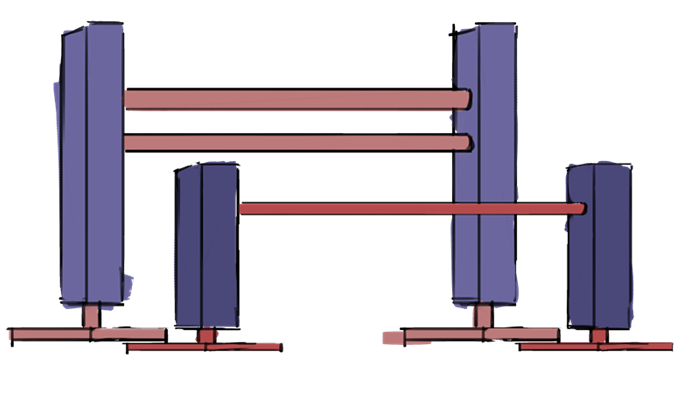
Triple bar
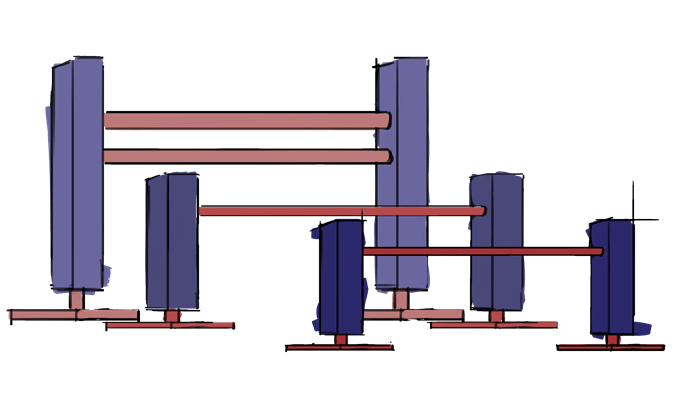
Wall
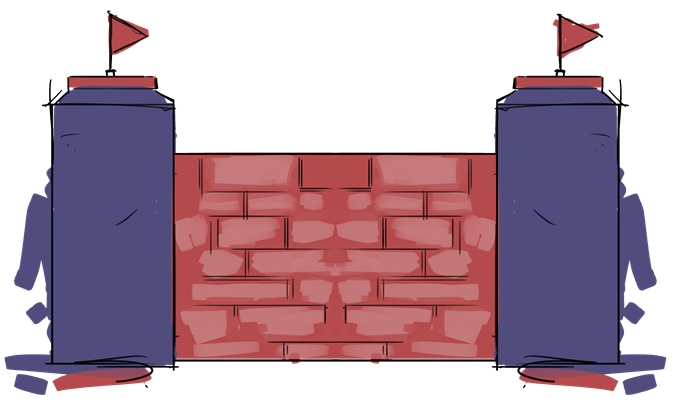
Water jump
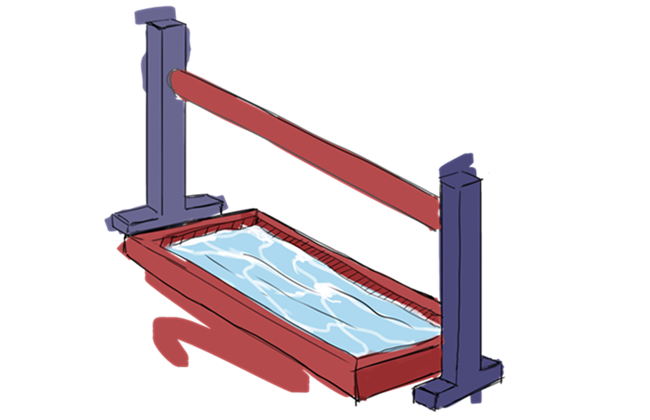
Horse problems in a show jumping arena
Jumping requires the rider and the horse to be fully focused and have great form; taking part in a competition is a great way to evaluate abilities. The diversity of courses and fences makes it impossible to practice every combination beforehand and ride from memory, in contrast to dressage competitions for example, during which the rider has a set program. During one event, there are many different classes organized, which means every rider can sign up for a class that corresponds to their abilities and form.
The increasing difficulty of competitions derives from the level of preparation of the horse-rider pair to the specific type of competition, so amateur courses are easier than those on the higher level. The problems encountered in a show jumping arena depend on the height and difficulty of the fence, as well as how difficult it is to ride to the base of the jump and the number of fences.
Inexperienced riders and “hot horses”
During a competition, riders can encounter problems that need to be addressed during a training session to prevent the problems from piling up. A frequently seen problem, especially among inexperienced riders, is the fast pace of the horse when riding up to the fence, and the pace increases after every jump. Losing control over the horse is dangerous and having a pace that is too fast is undesirable. It requires the rider and the trainer to slowly work through the problem to prevent it from becoming too big. If a horse fears new fences, then it’s another important problem that needs to be resolved at home. Because winners in show jumping are determined by a faultless round, many fences are full of surprises and fear-triggering details. In this case, the rider needs to work on their bond with the horse and control over the animal.
If you need help with your hot horse or you’re looking for ideas for exercises that increase your control over the horse, then check out our articles that tackle this problem:
Show jumping part 1
Show jumping part 2
Show jumping part 3
Young horses
Sometimes, problems disappear over time with the increasing level of the horse’s training. Young horses especially have a tendency to jump too high, which is inefficient, and uncomfortable for the rider. Young horses also have a problem with canter lead changes or putting their legs wrong during the landing phase. It’s important to bear in mind that young horses need time to develop their fluidity, balance, and jumping confidence.
Bear in mind that young horses need to be ridden between the fences at a slow pace, and avoid attacking the fences, shortening the fouls, or aggressive riding. Young horses are like sponges, quickly learn new abilities and face challenges; that’s why riders need to ensure their training is done slowly and all signals are clear to the horse.
Working with a new horse is never easy and should be reserved only for professionals. However, if you need help with your young horse and the problems listed above are well-known to you, then check out our article that contains exemplary solutions to those problems:
Show jumping part 4
Difficult horses
To make the horse more flexible, increase how fast it raises its leg while jumping or prevent stiffness and turning right after a jump, it’s advisable to incorporate gymnastic exercises.
A stiff horse is extremely difficult to ride; if the stiffness is accompanied by the inability to control the horse and the pace up to the jump then it’s a clear recipe for disaster and failure. Horses that know the patterns e.g., from past rides with inexperienced riders, won’t wait for the rider’s cues before or after the jump. Even if a rider has a talented horse with a predisposition to high-level competition, without basic training it’s impossible to win.
Ideas for gymnastic exercises and solutions to above-mentioned problems can be found in our articles:
Show jumping part 1
Show jumping part 3
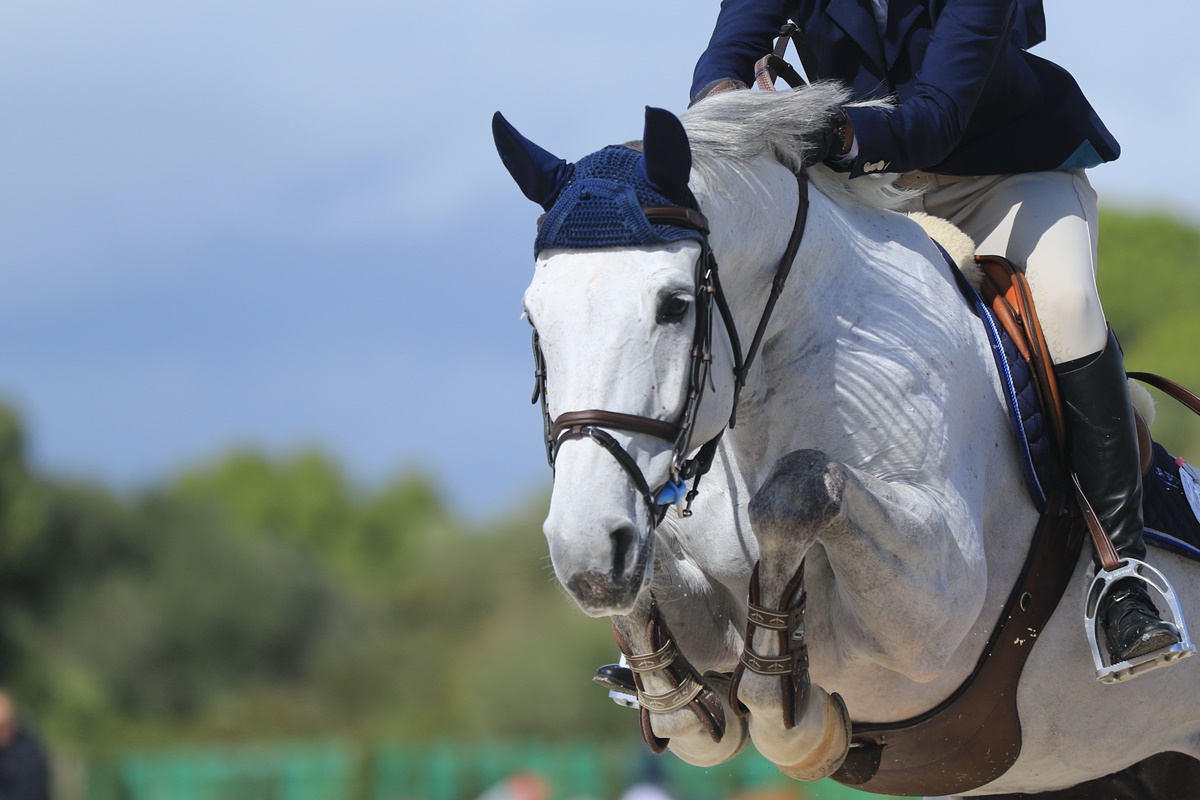
Necessary show jumping equipment for a rider and a horse
Show jumping is a discipline that has special regulations regarding the equipment of the rider and the horse. Regulations regarding horses touch upon the usage of boots, bridles, and side reins. Additionally, when participating in a competition it’s required to have a competition number that is used to identify the horse during the event. Using specific bits, side reins, or nosebands is forbidden by the regulations, so it’s important to familiarize yourself with those regulations beforehand and be permitted to participate in the competition.
The rider needs to wear competition clothing, that is white or beige breeches, a competition jacket, a shirt with a collar (women) or a tie (men), a riding helmet, and riding boots – tall boots or jodhpur boots with chaps. Each piece of the attire is regulated e.g., the competition shirt should cover the rider’s shoulders. The competition jacket is always required; however, the judge can grant permission to ride without it. This usually happens when the temperature outside is high, however, riders should always bring their jackets, because it's required to wear one during the award ceremony.
Things worth knowing before a competition
Thanks to the high interest of riders, show jumping is an extremely popular equestrian discipline in Poland. You need to know, there is a limit of rounds, two rounds per day but during a three-day or longer event, the limit is one round per day (3 days and up).
When going to your first competition ever, don’t focus on the results – when starting your show jumping journey it’s important to have calm and thought-out rounds without unnecessary pulling or chasing. The competition difficulty depends not only on the fence heights but also on the turns and combinations. If you don’t feel ready to participate in a competition, then work at home on things that you find difficult, to make competitions a pleasure not an unnecessary stress for you and your horse.
To avoid stressing about fence heights, your first competition should be a class lower than the one you trained at home. Jumping fences during a competition is much harder than it seems. For your personal comfort, don’t go crazy with the height when registering for your first competition, but decide for a lower class to have a controlled and calm round.
We wish all show jumpers good luck!
Are you looking for show jumping equipment for you or your horse?
News from Equishop equestrian store:



















